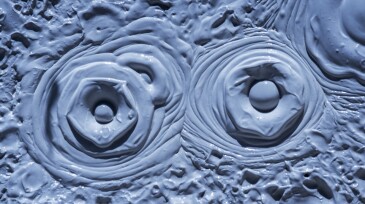Reservoir characterization
Data and impartial viewpoints can help de-risk exploration portfolios and keep resource estimates in check.
Geophysicist Markos Sourial discusses advances in seismic imaging, the challenges of modern data processing, and what they mean for the next wave of subsurface professionals.
This paper presents a novel methodology for assessing the rapid mineral carbonation of carbon dioxide through geochemical interactions with carbon-, magnesium-, and iron-rich minerals abundant in geological formations.
-
The authors develop a collocated finite-volume method to study induced seismicity as a result of pore-pressure fluctuations.
-
This paper describes the application of a synthetic seismic-catalog-generation method followed by application of a neural network on a seismic data set for an oil-producing field in the North Sea.
-
This paper describes an integrated work flow developed for 3D seismic reservoir characterization of deep and thin layers without sufficient well data in a South China Sea formation.
-
The author writes that careful calibration of a common, simple rock physics model can provide valuable insights into reservoir and seal elastic properties.
-
Two well-test logging operations have been carried out for the first time in a conventional carbonate reservoir in safe operating conditions and with repeatable results.
-
The past couple of years has been a rollercoaster for energy professionals, but it did not stop the incredible achievements in machine-learning (ML) techniques, particularly neural networks to improve seismic imaging.
-
SponsoredImprove decision making and reduce the uncertainty of CCS projects with accurate, detailed subsurface insights that help you estimate storage capacity, run play chance mapping, improve your injection strategy, and simulate carbon plumes over time.
-
The paper demonstrates the ability of deep-learning generative models to enable new shale-characterization methods.
-
A new dose of constraint may just be the best prescription for those making reserves estimates on prospective unconventional resources.
-
The utility of mud gas data so far has been limited to fluid typing, formation evaluation, and interwell geological and petrophysical correlation. The ongoing digital transformation has presented the opportunity to increase the utility of, and get more value from, the abundant and rich mud gas data. This article raises the question of whether getting more from mud gas…













